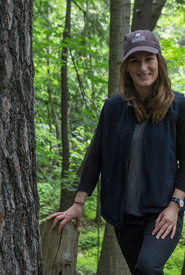Experimenting with native species in small spaces
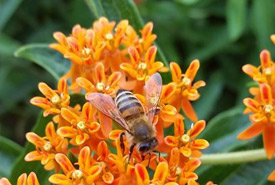
Honeybee on butterflyweed (Photo by NCC)
Earlier this summer, a group of Nature Conservancy of Canada (NCC) Leaders in Conservation visited St. Williams Nursery & Ecology Centre in Norfolk County, Ontario, for a tour of the nursery's impressive facility. With several years of experience in using native seed and plants for biodiversity conservation, St. Williams has partnered with NCC for many years in the restoration and conservation of properties across Ontario.
Since so many Canadians living in urban areas, the trip inspired me to uncover some starter tips for sprucing up a balcony or small backyard with native plants. Small native gardens not only breathe life into your outdoor space; pollinators such as bees and birds will thank you!
Consider your space
Sun: If your balcony or backyard is sunny and dry, similar to an alvar such as Ontario’s Carden Alvar Natural Area, these sun worshipers are good options:
- Prairie smoke: Prairie smoke flowers in the spring while the seeds persist throughout the summer. Place in full sun for best results.
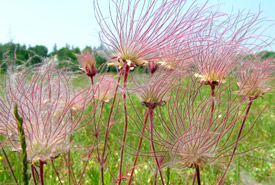
Prairie smoke, Carden Alvar, Ontario (Photo by NCC)
- Butterfly weed: The bright orange blooms on this plant attract hummingbirds and a variety of butterflies. It’s also a host plant for the monarch butterfly, so keep an eye out for striped caterpillars, as well as adult butterflies who may visit the flowers to drink nectar.
- Nodding onion: Another hummingbird and butterfly magnet, the nodding onion’s umbrella-like flower clusters bloom in mid-summer.
Shade: If your space is shaded by a tree canopy or the upstairs neighbour’s balcony, try these wild plants that are better suited to shady environments:
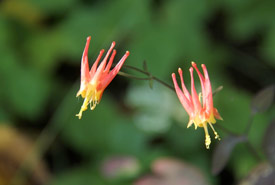
Columbine (Photo by NCC)
- Canada anemone: This plant produces pretty white flowers that start in late May and continue through to August.
- Wild columbine: Wild columbine is a beautiful yellow-and-orange flower that blooms in May. Hummingbirds and pollinators are attracted to the nectar produced by this plant. It adjusts well to a variety of environments and can cope with some drought.
- Mayapple: This interesting plant blooms in the spring, producing a single white flower underneath its leaves, which eventually turns into a yellow fruit. Although the ripe (when soft and yellow) fruits are edible, the unripe ( when hard and green) fruit is poisonous.
Considerations for using pots
As a general rule, native plants are low maintenance, resilient and should do well in planters and pots. That being said, here are a few considerations to increase your chances of success:
• Drainage: Use pots with a drainage hole at the bottom. As soil in pots dries up faster than soil in the ground, so you may need to water more frequently.
• Pot size: Use large, deep pots to allow roots more space to grow and to help keep soil temperature and moisture stable.
• Winter protection: Moving your pots close to an exterior wall and surrounding them with bags of leaves will help protect the roots during the winter.
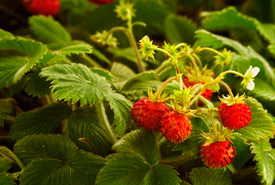
Wild woodland strawberry (Photo from Dreamstime)
Final thoughts
A few other native plants to consider are bloodroot, Canada mayflower, wild ginger, wild strawberry and wild bergamot. Before purchasing your plants or seeds, do a bit of research or call your nursery to help decide what types are right for your space
Good luck, and happy gardening!

